- About
- Sustainability
Reporter: Lin Lianyong, Yang Weifeng, Zhang Junlin
Photos: Courtesy of Interviewees
Quanzhou's "Scholar's Feast" offers a unique journey through the region's rich culinary heritage, epitomized by dishes like the "Kui Xing Banquet" of Yongchun and the "Zhuangyuan Family Banquet" in Jinjiang's Chidian. These feasts incorporate symbolic blessings—such as "Kui Xing Lighting the Stars" and "Triple Success"—into their recipes, celebrating academic excellence as students prepare for college and high school entrance exams.
The Kui Xing Banquet: Where Books and Cuisine Converge
Yongchun County, steeped in cultural tradition, has produced one top scholar, 92 Jinshi (advanced scholars), and 373 Juren (successful candidates) since the Tang Dynasty's Dazhong reign (857 AD). This legacy of scholarly achievement is also celebrated at the local landmark, Kui Xing Rock.
Food is central to this heritage. Known locally as the "Kui Xing Banquet," this feast uses local ingredients to weave together intangible cultural heritage, literary traditions, and culinary craftsmanship—creating a meal that is as meaningful as it is delicious.
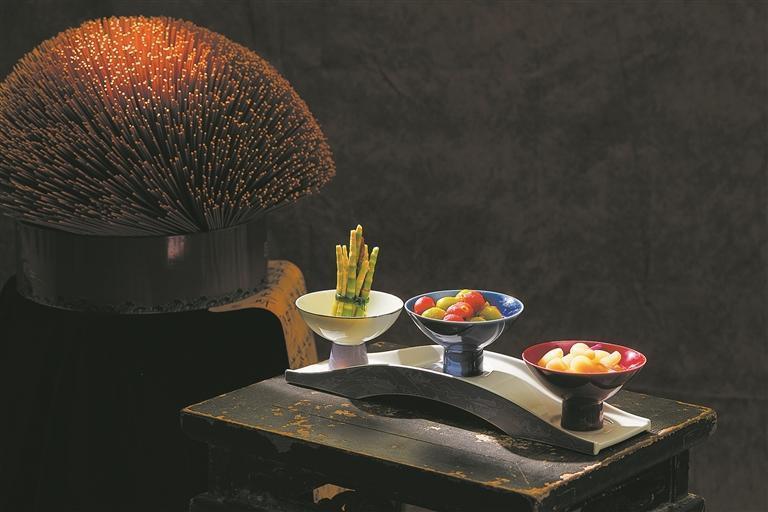
A Riot of Color (Sweet Cherry Tomatoes, Bamboo Shoots, Pickled Bulbs)
Yongchun's aged vinegar, one of China's four famous vinegars, is crafted using a unique liquid-state fermentation process from the Northern Song Dynasty. This process transforms starch into acetic acid in clay urns with red yeast. When this amber-hued vinegar meets local produce, it creates "A Riot of Color"—a cold starter symbolizing scholarly ambition. The sweet tomatoes, crisp bamboo shoots, and tangy pickled bulbs blend into a dish that awakens the palate.
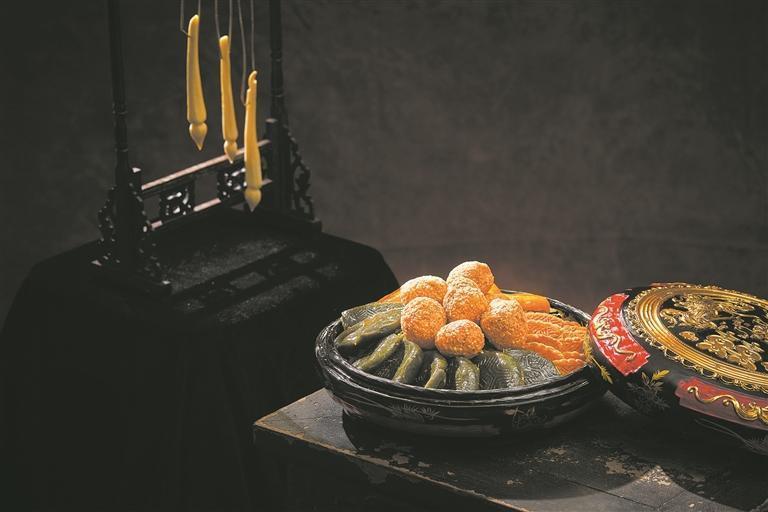
Peach Garden's Four Joys (Sticky Rice Cakes, Grass Cakes, Fried Rice Clusters, Fragrant Pastries)
Presented in a traditional Yongchun lacquer basket, this dish features sticky rice cakes, grass cakes, fried rice clusters, and fragrant pastries. The most storied is the "Sticky Rice Scholar Cake," made from sticky rice, mung beans, and sugar. Legend holds that during the Jiaqing era, local shopkeepers Sun Qingshui and his son Sun Bang sheltered a struggling scholar and encouraged him with these cakes. He eventually passed the imperial exams, and the cakes became known as "Sticky Rice Scholar Cake," symbolizing academic success.
Another highlight is the "Kui Xing Lighting the Stars" dish—fresh mushrooms, tea oil, and shrimp paste—whose aroma evokes the brilliance of scholarly talent.
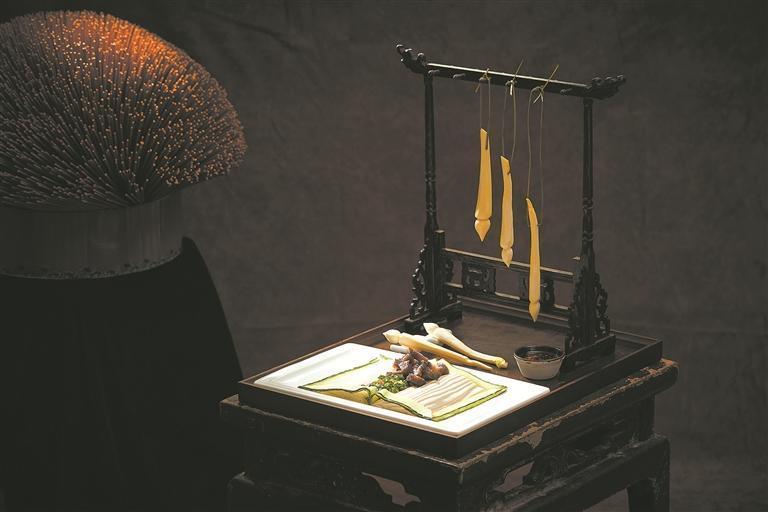
Brushwork Blooms (Book Page Tofu)
"Brushwork Blooms" features thinly sliced local tofu, steamed until it unfurls like an open scroll. Adorned with colorful ingredients and accompanied by a bamboo shoot "brush," diners use chopsticks to trace lines across the "page," evoking the artistry of scholars at their desks.
According to legend, Kui Xing, rejected for his appearance, leapt into the sea but was rescued by the mythical Ao. Since then, standing atop Ao's head, he has become a symbol of exam success. Yongchun chefs pay tribute to this story with "Standing on Ao's Head"—steamed snapper shaped like Ao's back and finished with a drizzle of hot oil and scallions. A dip in Yongchun's vinegar-based sauce completes this culinary homage.
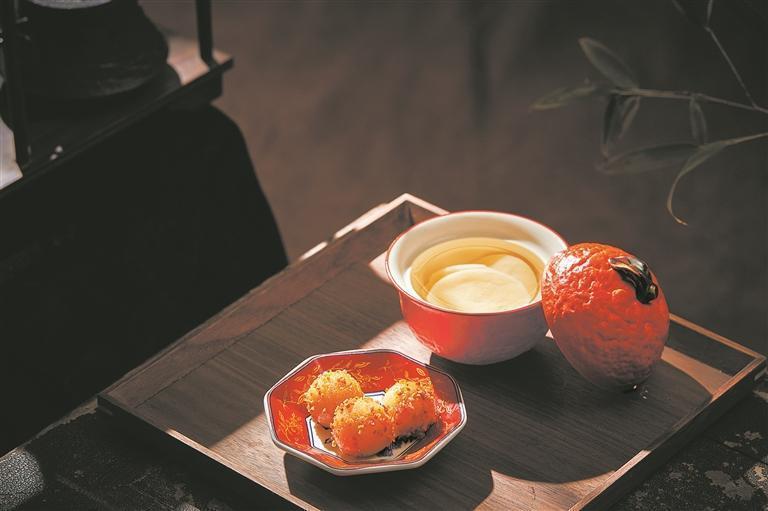
Triple Success (White Rice Wine Soup, Sticky Rice Dumplings)
This dish pairs white rice wine soup, symbolizing smooth academic success, with sticky rice dumplings representing life's fullness. Since the Song and Yuan dynasties, families have prepared this dish to wish examinees good fortune.
For locals, "success" means not only academic achievement but also harmony of body and mind. "A Mind Brimming with Knowledge" embodies this philosophy: a pig stomach stew, known as "Yangpi San," dating to the Yongzheng era, blends medicinal herbs for a dish that nourishes both body and soul.
From the amber glow of aged vinegar to the sweet comfort of the Sticky Rice Scholar Cake, Yongchun's cuisine transcends mere sustenance—it's a vessel of cultural memory. When diners savor the "Kui Xing Banquet," they taste not just tradition but a community's enduring respect for knowledge and hope for the future.
Zhuangyuan Family Banquet: History on a Plate
Jinjiang's "Zhuangyuan Family Banquet" in Chidian celebrates local academic success through more than 30 themed dishes, including "Dragons and Tigers Rise to the Top" and "Triple Success," 12 of which have been recognized as national landmark dishes.
Chidian is known as the "Home of Top Scholars," having produced five top scholars, two second-place scholars, three prime ministers, and four ministers. This legacy began with Quanzhou's first Jinshi, Ouyang Zhan, who as a young man crossed 99 bridges daily to study at Zifu Monastery—embodying the region's scholarly spirit.
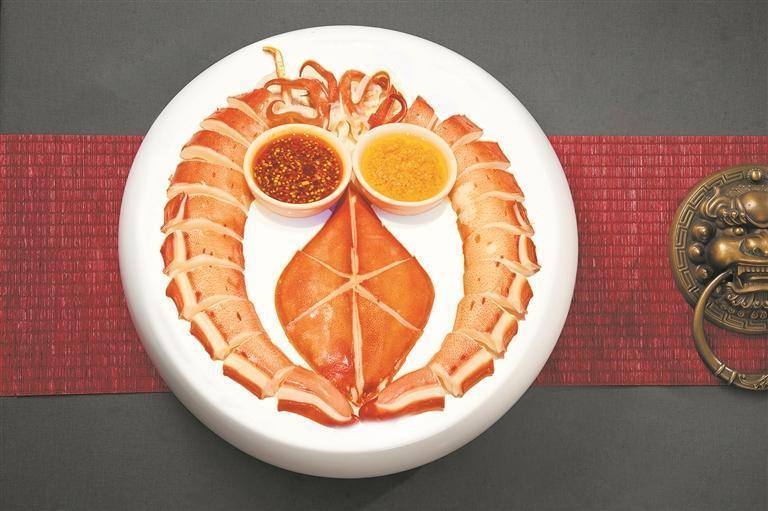
Smooth Sailing (Fresh Squid)
This dish uses locally caught squid, blanched and dressed with a special sauce to preserve its tender crunch. Its arrangement evokes a bridge over a stream, symbolizing the path to success.
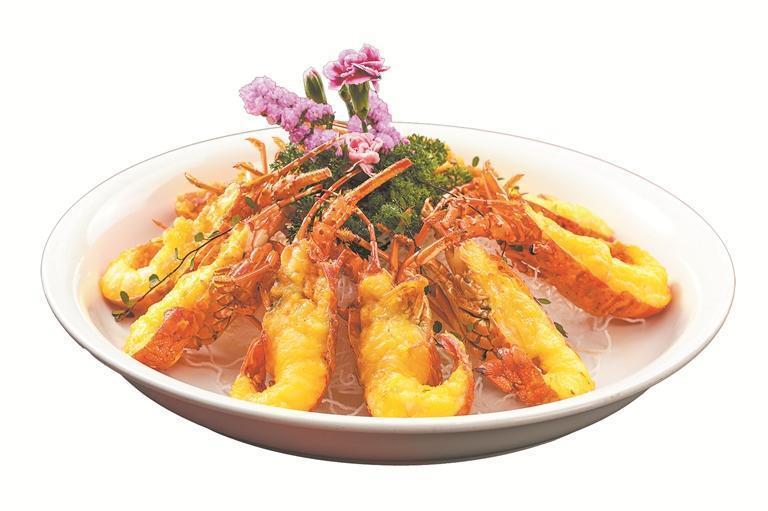
Dragons and Tigers Rise to the Top (Salt and Pepper Lobster)
Inspired by the Tang dynasty's "Dragon and Tiger List" of top scholars, this dish features lobster arranged in a fierce stance, embodying ambition and achievement.
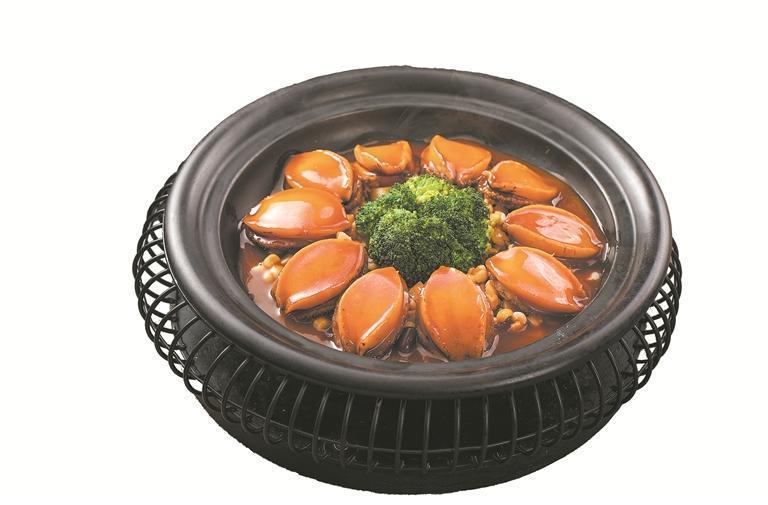
A Late Bloom (Black Truffle Abalone)
A local legend recounts that scholar Xu Hui, initially unsuccessful, found inspiration in Ouyang Zhan's poem "Great talents take time to mature," eventually becoming Fujian's first top scholar after eleven years. This dish pairs abalone and grains, blending the sea's richness with the land's bounty.

Leaping Carp (Steamed Fish Head)
Inspired by the Tang dynasty's "Tail Banquet," where successful scholars celebrated, this steamed fish head dish captures the joy of success.
The "Scholar Crab" dish features a crab shell resembling an exam cap, its meat symbolizing victory. "First-Class Honors" showcases local steamed crabs, representing the highest academic honor.

Triple Success (Crispy Taro Balls)
These golden-fried taro balls are filled with pork and bamboo shoots and wrapped in noodles, embodying the region's celebration of success and good fortune.
"Spring's Triumph" is a vibrant vegetable medley, arranged like a painting of a pastoral landscape, honoring Chidian's enduring literary traditions.
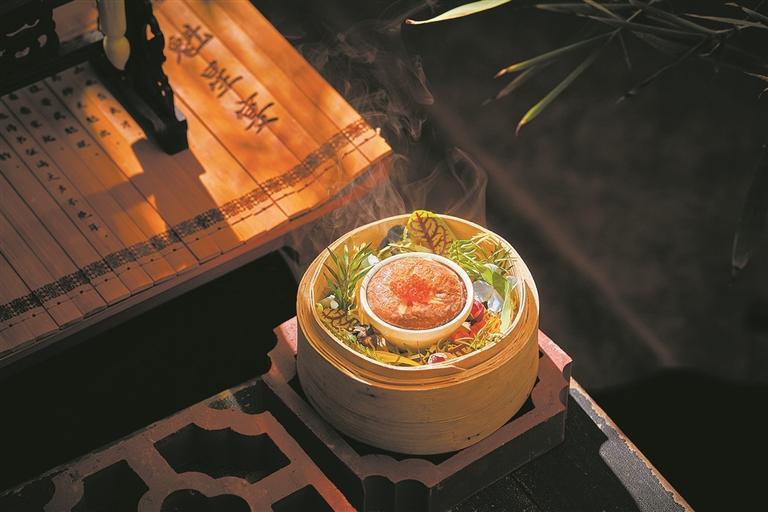
Kui Xing Lighting the Stars (Stuffed Mushrooms)
The feast ends with a sweet peanut soup. In local dialect, peanuts symbolize "Kui Xing Lighting the Stars," offering blessings of sweetness and scholarly success.
From mountain delicacies to coastal flavors, Quanzhou's "Scholar's Feast" connects generations through taste. Beyond food, it embodies a community's dedication to education and the belief that diligence yields rewards. These dishes, rich in history and hope, carry forward the region's deep reverence for knowledge and learning.
